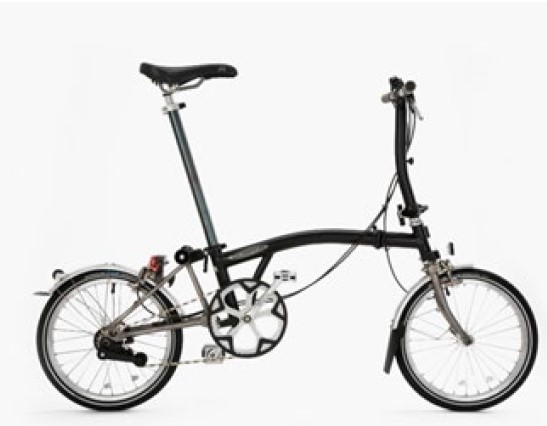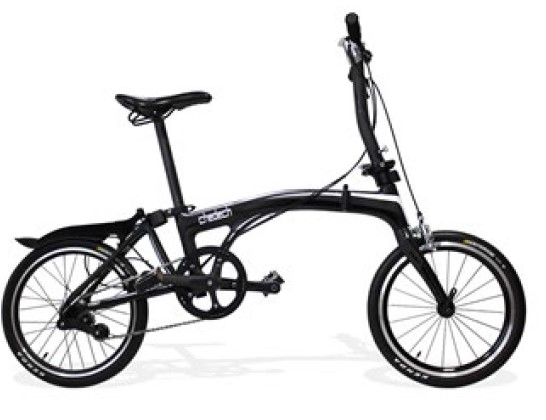In the Brompton Bicycle case (C-833/18) the CJEU has issued a key decision on whether it is possible for a mass-produced utilitarian product with a functional design to qualify for copyright protection. The Court found that copyright protection could apply to a product “whose shape is at least in part, necessary to obtain a technical result where that product is an original work resulting from intellectual creation, in that, through that shape, its author expresses his creative ability in an original manner by making free and creative choices in such a way that the shape reflects his personality”.
Following on from the earlier case-law setting out the main principles for functional shape protection, in this new decision the CJEU has focused more deeply on how the originality requirement of a copyright work has to be assessed and on the relevant factors which are worth considering. See our initial comments in our post on the day of the decision here.
Background: the dispute between Brompton Ltd. and Get2Get
In 1987 Mr SI, the founder of the UK Brompton company, had started to market the iconic “Brompton” folding bike with the particular feature that it can have three different positions, a folded, unfolded and a stand-by position which enabled the bike to stay balanced on the ground, achieving great success in the international bicycle sector. These novel features were protected by a patent which has expired. Korean company Get2Get launched a bike (the “Chedech bike”) that had a similar appearance and could fold into three different positions just as the Brompton could.


Brompton bike Chedech bike
Mr SI took legal action against the Korean competitor before the Court of Liège to seek copyright protection of his Brompton bike and obtain the withdrawal of the Korean company’s products from the market. The Belgian Court referred questions on the interpretation of Article 2 to 5 of EU InfoSoc Directive 2001/29 to the CJEU, in particular it asked whether copyright protection applies to a product whose shape is, at least in part, necessary to obtain a technical result.
The CJEU decision
The CJEU followed the principles set out in its 2019 decision Cofemel (C-638/17) and confirmed that in order to enjoy copyright protection, a “work” must meet two specific requirements: (i) it has to embody an original subject matter that reflects the personality of its author, as an expression of their free and creative choices, and (ii) the existence of a subject matter must be identifiable with precision and objectivity.
The CJEU pointed out that if the shape of a product is solely dictated by its technical function it cannot be eligible for copyright protection, as in that case there would be clearly no room for a designer’s creative freedom.
The CJEU also confirmed that originality should not be assessed with regard to the idea per se (such as the concept of a folding bicycle), but rather to its expression. The CJEU confirmed that it is a well-established principle that ideas cannot be protected under copyright law. Therefore, reference must be made to the specific combination of the elements of a subject matter in order to assess whether they are dictated solely by the technical function.
The CJEU ruled that, in order to conclude that a design product is not entirely dictated by technical constraints, it needs to be demonstrated that the author has expressed their creative ability in an original manner, designing a product that results in an actual reflection of their personality. In relation to functional designs the assessment must be made as to whether the design has been dictated by technical considerations, rules or other constraints which have left no room for creative freedom or room so limited that the idea and its expression become indistinguishable. If so then the design will not be original and will not qualify for copyright protection.
In this regard, the existence of other possible shapes that would achieve the same technical result - which the Brompton design owner had claimed as one of the grounds for their bike’s originality - would demonstrate that there is a possibility of choice, however it would not be decisive in assessing whether the product reflects its creator’s personality.
Similarly, the existence of an expired patent on that product, could be a factor that could help in determining what was taken into account by the designer in choosing the shape of the product, but it is not decisive to establish that the specific shape is necessary to achieve that technical results.
Further, the Court held that the intention of the alleged infringer to achieve the technical result was not relevant in such assessment.
In conclusion, the Court held that, in order to assess whether the folding bicycle at issue is an original creation and is thus protected by copyright, account should be taken of all the relevant aspects, as they existed when that subject matter was designed, not later changes or external factors.
The decision is now in the referring Belgian court’s hands. This court will need to assess whether the shape of the Brompton bike could be considered an original work by virtue of being the expression of the free and creative choices of its author in a way that reflected their personality (and therefore is original and thus qualifies for copyright protection) or whether the shape of the bicycle is a technical constraint with no room for the designer to exercise creative freedom (and does not).
Comment
This decision will have an important impact in the design sector, because it has confirmed that, in order for a design product to enjoy copyright protection, it is both necessary and sufficient that such product reflects the personality of its author, as an expression of their free and creative choices, even if the shape of that product is, at least in part, necessary to obtain a technical result.
Since copyright protection is one of the longest lasting IP rights, this will make it an attractive option, in particular where other rights such as registered designs or patent rights in the product have expired.
As regards Italian law, industrial designs must also meet the “artistic value” requirement in order to be awarded copyright protection. According to settled case law, such an artistic value exists where a design has an expressive value that goes beyond the mere functional purpose of said object and it is the expression of artistic or cultural influences. In light of the Cofemel and Brompton CJEU decisions, it may now need to be considered whether such a requirement is added to the originality and the identifiable expressive form requirements set out by the CJEU in these cases, and whether this would be found to be contrary to EU law (as was the case with elements of Portuguese copyright law referred in the Cofemel case), or whether it should be considered as one of the “relevant aspects” to consider in order to assess the originality. In any case, it seems that this requirement may not have the same key significance going forward that it had in the past in Italian case-law.
See also our blog post here for more commentary on the impact of this case.
Key contacts and authors

Laura Orlando
Italy Managing Partner, Joint Global Head of Intellectual Property, EMEA Co-Head of Life Sciences, Milan
Key contacts

Laura Orlando
Italy Managing Partner, Joint Global Head of Intellectual Property, EMEA Co-Head of Life Sciences, Milan
Disclaimer
The articles published on this website, current at the dates of publication set out above, are for reference purposes only. They do not constitute legal advice and should not be relied upon as such. Specific legal advice about your specific circumstances should always be sought separately before taking any action.


